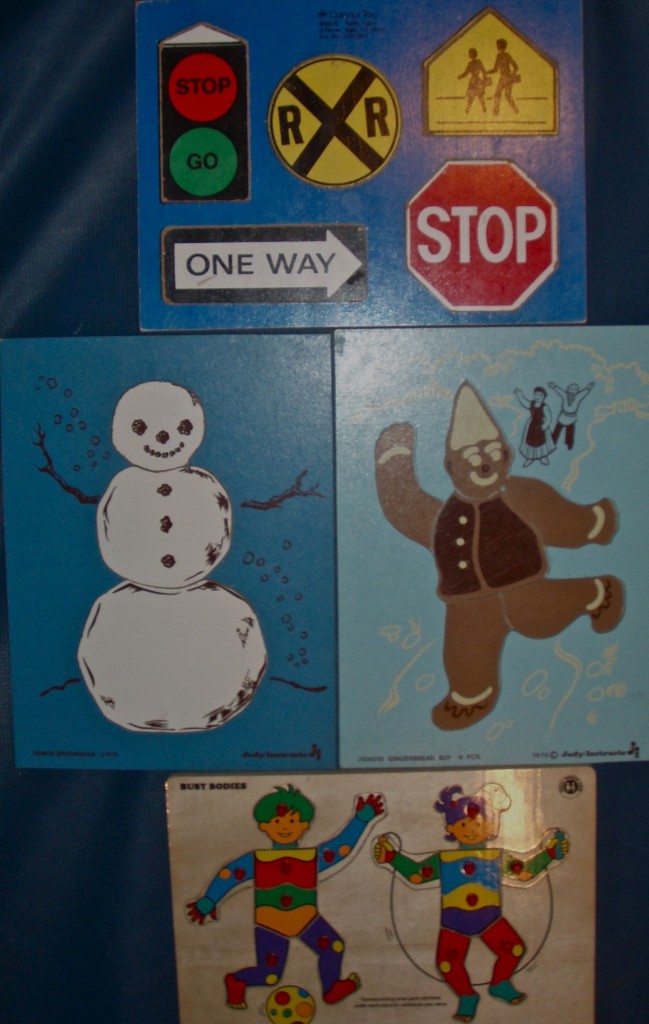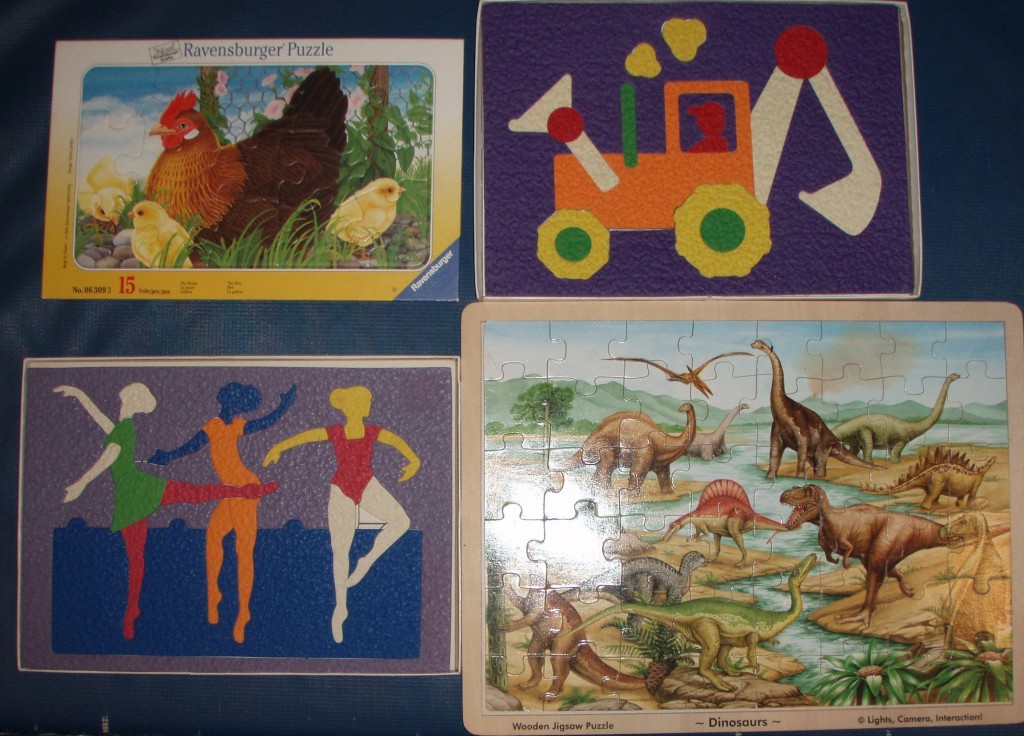Block building continues but encourage horizontal as well as vertical structures. In essence, as the child grows, three dimensional structures should develop. If the child does not do this spontaneously, build a four walled frame for a simple house and encourage the child to continue the pattern by stacking blocks around the first layer.
Puzzles, bead and block designs become more complex. Individual form board type puzzles should lead to integrated puzzles. Do not push the child to complex puzzles until successful with a limited number of pieces. When helping with puzzles skills, direct the child’s attention to the straight edges and corners. This helps build important spatial concepts.
Recommended puzzles (with a nice gradation in degree of difficulty):
- Judy
- Laurie
- Ravensberger
Games with Spatial Components can be introduced (with the older preschooler):
- Checkers
- Tic tac toe
- The Square Game
Games that encourage Visual Memory:
- Memory
- Concentration (card game)
- What’s in the Bag?
Activities that develop Figure Ground skills:
- Books such as “I Spy” and “Where’s Waldo?”
- Hidden pictures, activity books
- “I see something you don’t see” games (great for long car rides)
- Find all the (Squares/circles/rectangles) in the room
Activities to increase Visual Discrimination:
- Dominoes
- Mazes
- Bingo
- Picture/letter searches
- Slap Jack (card game)
- Smarty Farms*
Developing Spatial Relationships through 3-D Construction:
- Pipe cleaners/ Sticky Wicks
- Popsicle sticks
- Geo Boards
- Cut out cardboard shapes
- Mighty Minds/Super Minds*
- Lego/Duplo
- Snap blocks
- Lincoln logs**, Tinker Toys** and other building forms
**Often found at tag sales
Identifying and Creating Patterns:
- Weaving
- Blocks
- Beads
- Peg boards
- Tricky Fingers*
- Geometrical Design Coloring books (e.g. Buki)
- Making chains (of paper clips, etc.)
Visual Tracking:
- More Balloons, Bubbles and Eye Hand activities (e.g learning to catch a ball)
- Flashlight tag
- Glitter wands
Obviously visual spatial and visual perceptual skills play a key role in learning to read and write as well as understanding many math concepts. With so many fun activities listed here to get through, WHY would you waste time on boring flash cards and workbooks with a preschooler ?!?!
*Can be ordered through www.therapro.com

